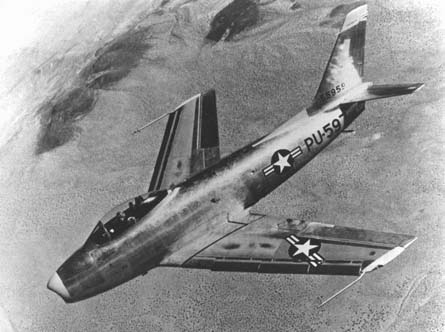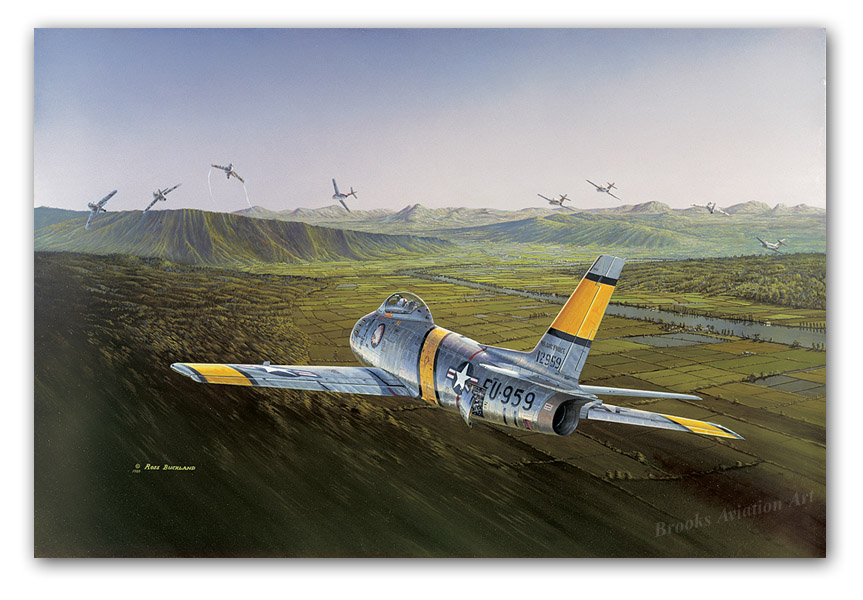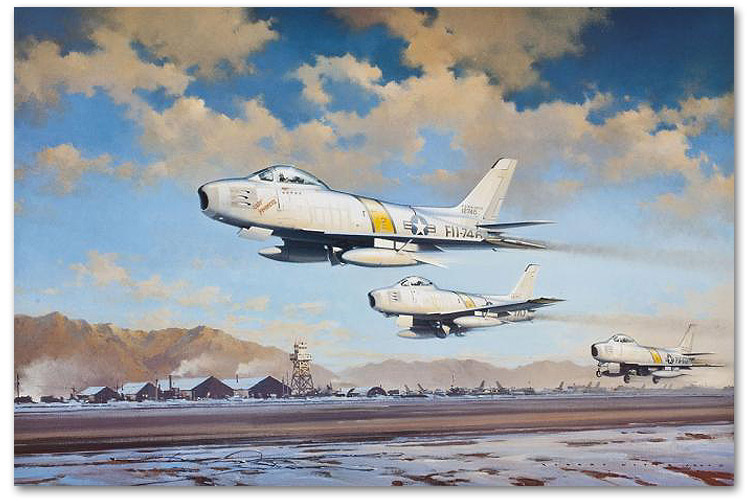|
Posted on 06/15/2004 12:03:14 AM PDT by SAMWolf
|
|
 are acknowledged, affirmed and commemorated.
|

| Our Mission: The FReeper Foxhole is dedicated to Veterans of our Nation's military forces and to others who are affected in their relationships with Veterans. In the FReeper Foxhole, Veterans or their family members should feel free to address their specific circumstances or whatever issues concern them in an atmosphere of peace, understanding, brotherhood and support. The FReeper Foxhole hopes to share with it's readers an open forum where we can learn about and discuss military history, military news and other topics of concern or interest to our readers be they Veteran's, Current Duty or anyone interested in what we have to offer. If the Foxhole makes someone appreciate, even a little, what others have sacrificed for us, then it has accomplished one of it's missions. We hope the Foxhole in some small way helps us to remember and honor those who came before us.
|
 Forerunner of the modern infantry fighting vehicle, the M3 Half-Track was of half-French origin. In 1931 the U.S. Army purchased a French Citroen-Kegresse Model P17 half-track as part of a research and development effort for its own design. Working with private firms, the Army Ordnance Department produced the T14 prototype in 1939. In September of the following year the T14 was standardized and accepted for production; it became the M2 and the M3 Armored Personnel Carrier.  During World War II, the M3 proved to be a versatile workhorse, and eventually over more than 41,000 vehicles in no less than 70 versions were produced. Later, improved models of the M2 and M3 were designated M9 and M5. Production stopped in 1944, but the Half-Track remained in service until early 1950s.  A half-track is a vehicle that utilizes both tracks and wheels as running gear. The half-track was conceived by the Russians around 1914 but successfully developed by the Citroen Company in France. The U.S. Army purchased a license to develop half-tracks and experimented with half-track adapters. These were track units that could be retrofitted to existing vehicles. The mobility of the vehicle improved markedly when using these adapters. The scout car M3 was retrofitted with tracks culminating in the classical design as shown above. Half-tracks were built by White Motor Company, Diamond-T Motor Company, Autocar Company and International Harvester.  The basis of the half-track was a truck chassis and drive train. An armored box was placed in the back to provide protection for personnel and armament. This vehicle was equipped with a ditch roll which helped in traversing obstacles. Some vehicles were equipped with a winch in place of the ditch roll. Radiator louvers were used during battles to protect the radiator from small arms fire. The 4 speed transmission, combined with a 2 speed transfer case yielded 8 speeds forward with two in reverse. The levers to the right of the shift lever select high and low range and front wheel drive. The center seat is the jump seat, usually for the gunner. The track is constructed of two steel cables with rubber track molded around them. The rubber gives flexibility to the track while the cables are for reinforcement. The rear idler is used to adjust track tension. The power plant is a White 160 AX, 6 cylinder engine.  The U.S. half-track was first used in the Philippines where several initial design problems arose. The suspension was modified for increased reliability, but one of the main criticisms, the lack of overhead armor, was never changed throughout the life of the vehicle since the added weight decreased mobility. After the surrender of Bataan, several half-tracks were utilized in the Japanese army. In North Africa the half-track was improved with heavier road wheel springs and heavier springs for the rear idler. During the battle of the Kasserine Pass, several half-tracks were captured and used by the Germans. At the time of the invasion of Sicily, the half-track had settled into its role as an armored infantry transport vehicle that was able to deliver infantry closer to the battle since they were less vulnerable to rifle fire.  The vehicle would hold supplies and infantry field equipment, leaving the infantry unencumbered by heavy field packs. The half-track was highly mobile and could follow tanks quite easily, unlike trucks which were more at home on the road. The half-track was often criticized as too lightly armored, but this could partially be attributed to abuse of the vehicle. Some units used the half-track as an armored assault vehicle which was not its role by design. The M2 and M3 half-tracks, the machine gun/armored personnel carrier versions of the vehicle, were widely used in the European theater.  The German SdKfz 251 half-track was similar to the American half-track. The 251 had better armor protection, but the U.S. half-track had superior mobility with more horsepower, a driven front axle and a ditch roll. Half-tracks were also used as gun motor carriers or gun carriages, the most common being the gun motor carriage (tank destroyer), the Howitzer motor carriage, the mortar motor carriage and the multiple gun anti-aircraft motor carriage. The tank destroyer version of the half-track was marginally successful and eventually was replaced by the Sherman chassis based tank destroyers such as the M10. The M16 quadmount version of the half-track proved very successful and became the standard light anti-aircraft armored vehicle. Over 30,000 vehicles were produced during the war. 
|
|
Air Power |
Early in WWII, American aircraft researchers were confronted with the problem of "shock waves" building up at the frontal surfaces of aircraft particularly wing and tail surfaces when the aircraft was flown at high speeds. These shock waves could and did cause complete destruction of some aircraft, notably several Lockheed P-38 "Lightnings". The North American P-86 Sabre was the first American aircraft to take advantage of flight research data seized from the German Luftwaffe at the end of the war.
Utilizing data gleaned from Luftwaffe experiments, the wings and the horizontal and vertical stabilizers of the Sabre were swept back at an angle of 35º in order to delay the onset of shock waves, thus allowing higher speeds.
What would become a spectacular career as a combat aircraft began on May 14, 1945 when the US Army Air Corps ordered 3 copies of the North American model NA-140 experimental aircraft. The XP-86 was first flown at Muroc Dry Lake, California on October 1, 1947. It was equipped with a 4,000 pound thrust J-35-C-3 jet engine built by Chevrolet. The highest speed was attained at 14,000 feet where it clocked 618.33 miles per hour. It had a ceiling of around 41,300 feet and its initial climb rate was 4,000 fpm. This was fantastic performance when compared to any prop-driven plane the US had produced up to the end of the war. Even North American’s own prop-driven P-51 paled by comparison. Test pilots were ecstatic over the Sabre, with comments such as "...rock-steady gun platform." and "...so easy to fly you can almost control it with your thoughts".
The third production F-86A-1 (by this time the "P" for "Pursuit" had been superseded by "F" for "Fighter") equipped with a new J47-GE-13 engine of 5,200 pounds thrust, set a world’s speed record of 670.98 mph on September 1, 1948. The Sabre was armed with six .50-caliber M-3 machine guns in the nose, just aft of the jet intake. Target acquisition was aided by a new radar assisted gunsight. It required the pilot hold the cross hairs on his target for just one second. From then till the target was obliterated, the pilot was free of the complicated problem of adjusting for the target’s range during the heat of combat.
The F-86B (later redesignated F-86A-5), with its top speed of 679 mph, and initial climb rate of 7,470 fpm it represented a marked improvement over the A-1. A Wing of F-86A-5 aircraft arrived in Korea on December 13, 1950 making it the first Sabre sent to Korea. On December 17 they went into action against the awesome and hitherto invincible MiG-15. Within two weeks, the Sabres had established a "kill ratio" of better than 8:1 over the MIG.
Admittedly, the superior training and tactics of the US pilots brought about a large part of this success, for the A-5 Sabre had inferior performance when compared to the MIG-15. It was slower and unable maneuver as well as the MIG above 25,000 feet. Its service ceiling of 48,000 feet was much lower than the MIG. Nevertheless, the appearance of the Sabre was the beginning of the end for the MiG-15 in Korea.
The Sabre was continuously improved throughout its 10-year production run. Each model performed better than the last. There were two major variations of the craft. The F-86C was redesignated "YF-93" and was intended to be a "penetration fighter". However, it eventually came to a dead end.
The second variation was known as the F-95 until July 1950, when it was redesignated the F-86D. It was labeled an "all weather interceptor". Some experts are of the opinion the "D" was so different from the basic model it should have retained it’s F-95 designation. For one thing the J47-GE-17 engine was equipped with an afterburner which delivered a total of 7,500 pounds thrust for take-off, giving the "D" an initial climb rate of 12,150 fpm! The nose was shaped like a shark snout with an open mouth for an air intake. Above the mouth and projecting forward was the shark’s nose, which housed a radar antenna for the Hughes E-4 automatic fire control system. More than anything, the F-86D resembled a shark right down to the fins, and should have been named so. But the Air Force Brass was reluctant to pick a name with such a nautical connotation.
It was the first USAF night fighter to carry only one airman and have only one engine. The fire control system was so automatic, a second airman was considered unnecessary. A pod containing twenty-four 2.75 "Mighty Mouse" air-to-air rockets was located in the belly. The pod was lowered into the airstream in order to fire the rockets, then quickly retracted so as not to affect the speed or handling characteristics any more than necessary. The pilot had to take great care to insure each rocket had cleared its tube when fired. If a rocket was hanging halfway out the tube and the pod were retracted, the rocket would explode. If the pilot wasn’t absolutely sure of the position of the rocket, he landed the Sabre with the pod extended. The author observed just this sort of incident in 1957 at Wheelus Field, Libya. In this case, the instant the Sabre touched down, the rocket fired and blasted a 15-foot hole in a rock security fence nearly a mile and a half away!
The "E" was very similar to the "A" with the same J47-GE-13 engine. It was designed to carry a bit heavier combat load.
The "F" was furnished with the J47-GE-27 engine with about 700 additional pounds of thrust (no afterburner), which increased its top speed about 15 mph to 695 mph. Combat range was increased from 660 miles to 923miles. The F was the first Sabre to haul a 1,200 lb. nuclear bomb, which was carried under the port wing. In order to safely deliver this weapon, the aircraft was also furnished with a LABS (Low Altitude Bombing System) which allowed the craft to escape the blast.
The "G" designation was temporarily given to the F-86D with J47-GE-33 engines. The plane was produced as the F-86D.
The F-86H was the final model and was specifically designed as a fighter-bomber. It had the much more powerful J73-GE-30 Engine of 8,920 lbs thrust with afterburner. Its combat range was extended to 1,038 miles. Later editions of the "H" had the wing slats removed and the leading edges extended. The wing tips were also extended to provide better maneuverability at high altitude. The H-5 and H-10 had the six .50 caliber machine guns removed and replaced with four 20 mm M-39’s for greater hitting power.
Altogether there were about 6,200 F-86 Sabres built in the US before production ceased in December 1956. A couple thousand more were built in 25 other countries around the world. Even our old enemies the Germans flew them, and Mitsubishi (builders of the famous World War Two "Zero") assembled 300 for the Japanese.
Specifications:
Contractor: North American
Primary Function: Fighter
Crew: One
Unit Cost: $178,000
Powerplant: Single J47-GE-27 (no afterburner) rated @ 5,910 lbs (2,708 kg) thrust
Dimensions:
Length: 37 ft. 6 in.
Wingspan: 37 ft. 1 in.
Height: 14 ft. 8 in.
Empty Weight: 10,815 lb
Maximum Takeoff Weight: 13,791 lb. (loaded)
Performance:
Cruising Speed: 513 mph (826 km/h)
Max Speed: 685 mph
Ceiling: 49,000 ft
Normal Range: 463 miles (745 km)
Maximum Range: 1,317 miles (2,120 km)
Armaments:
Six .50-cal. machine guns
Eight 5 in. rockets or 2,000 lbs. of bombs






Wonder what I could run over with that.
|
Mega Flag-O-Gram BUMP |
Snippy, thank you for doing this. We are all so proud of our church and minister for honoring veterans, past and present, in this way. I will certainly pass along this thread to our minister.



Yugos and GEO Metros :-)
Had a Metro, a Ford Ranchero could run over it..
Afternoon Matt.
We can divide our Conservatives and Liberals into Social Conservatives/Fiscal Conservatives and Fiscal Liberals/Social Liberals. There are people who are Fiscal Conservatives and Social Liberals and other combinations. Ain't Politics wonderful?
The Union of Freedom sounds like Fiscal Conservatives but Social Democrats.
No problem, Snippy. I just thank you for posting it. Maybe other congregations will do the same for their veterans.
Cool! Take some pictures of the folding ceremony if you can. That would be neat to see.
That is very touching and so cool. Thank you for sharing.
"Take some pictures of the folding ceremony if you can. That would be neat to see."
Good idea; I will.
My pleasure. Glad you liked it. It really is beautiful.
You did good. Thanks for sharing Matt.

Disclaimer: Opinions posted on Free Republic are those of the individual posters and do not necessarily represent the opinion of Free Republic or its management. All materials posted herein are protected by copyright law and the exemption for fair use of copyrighted works.